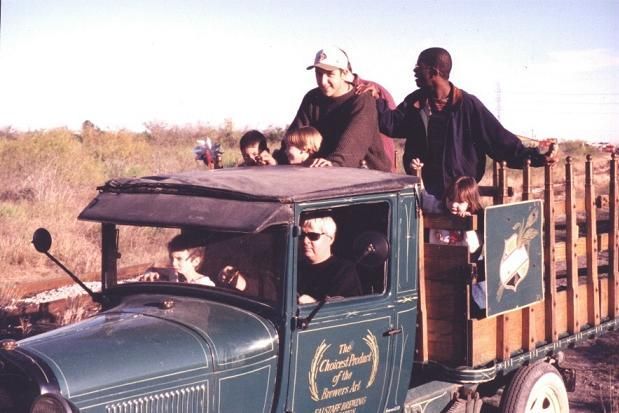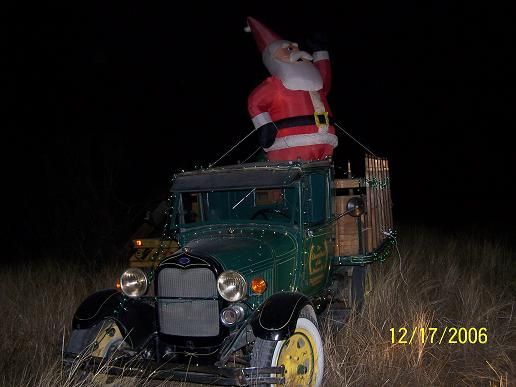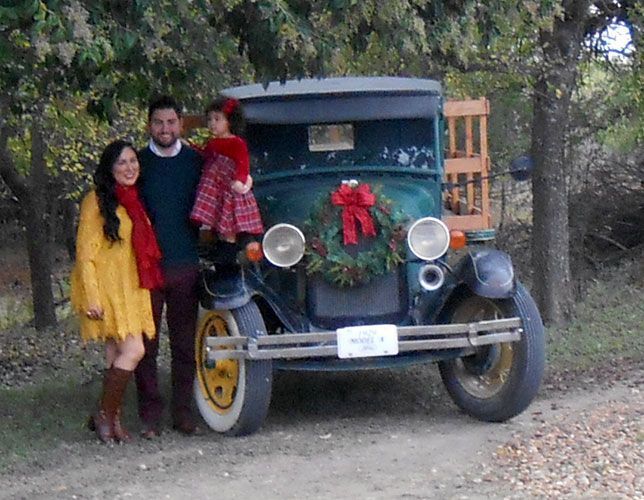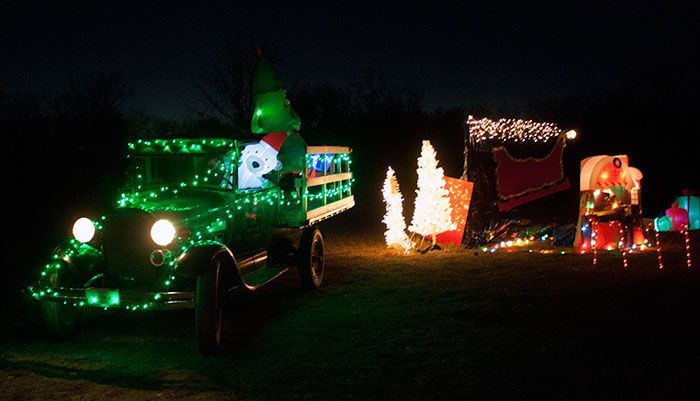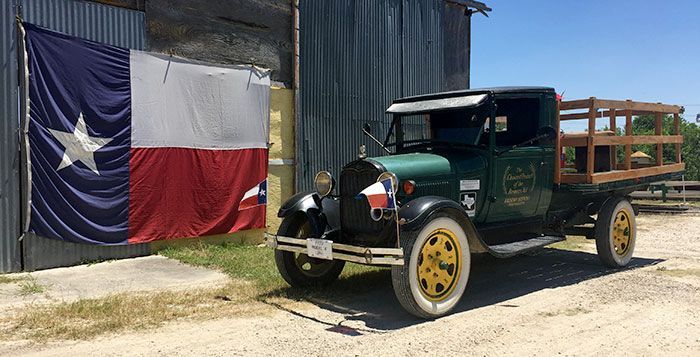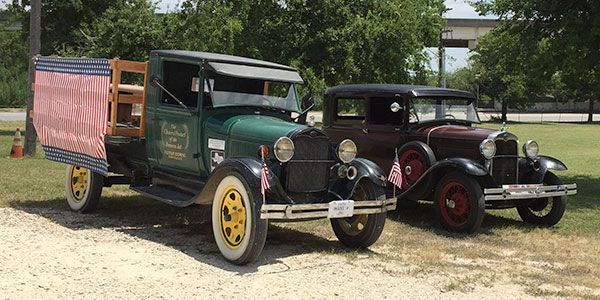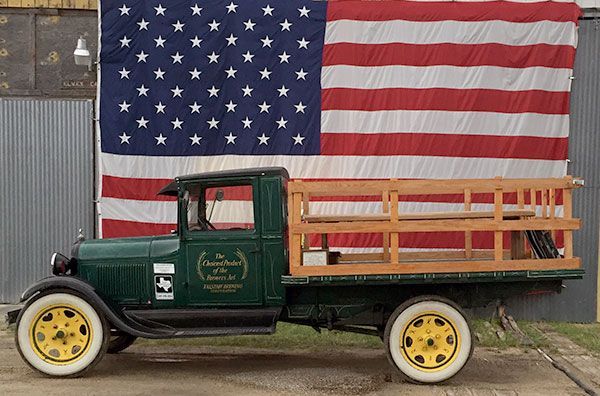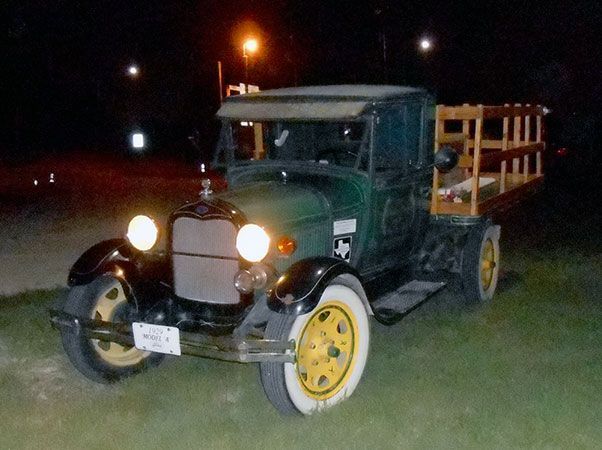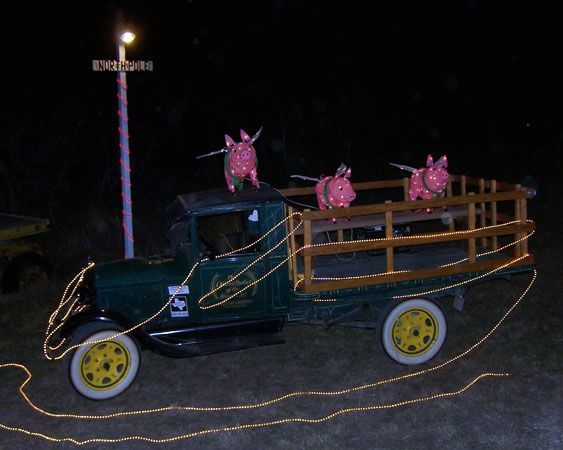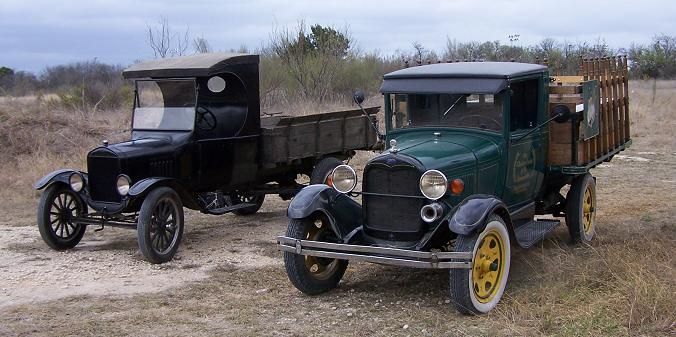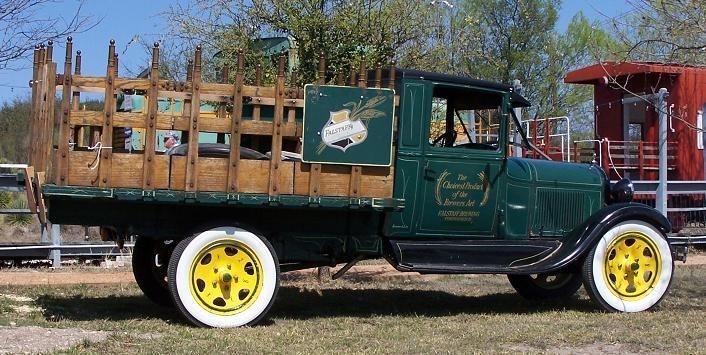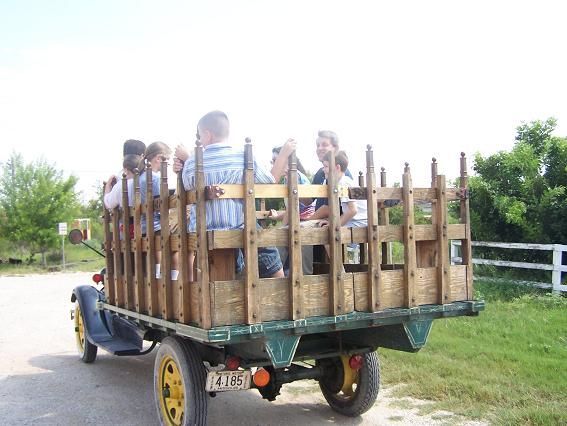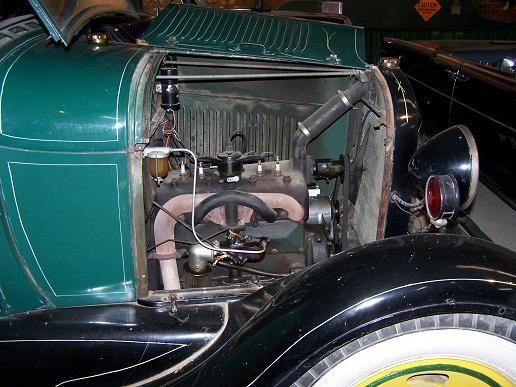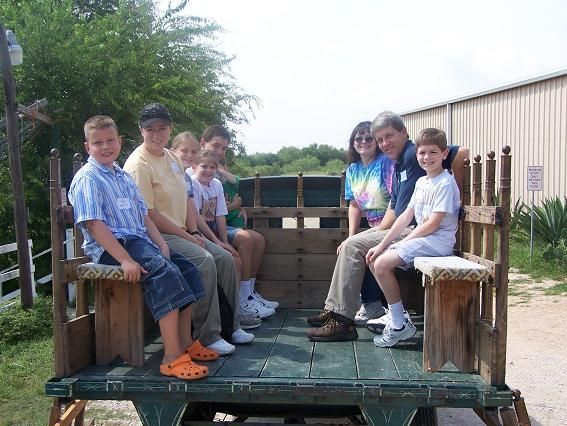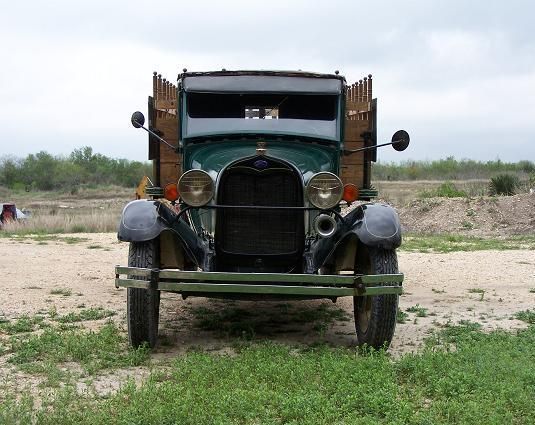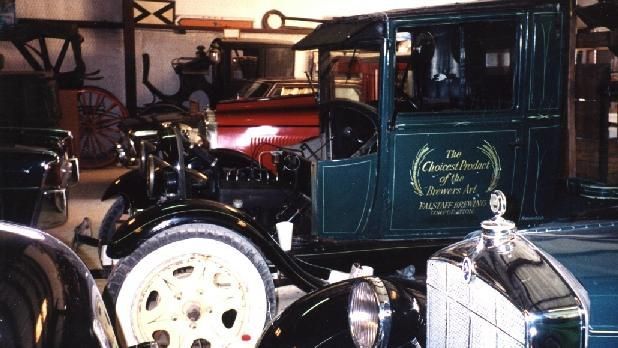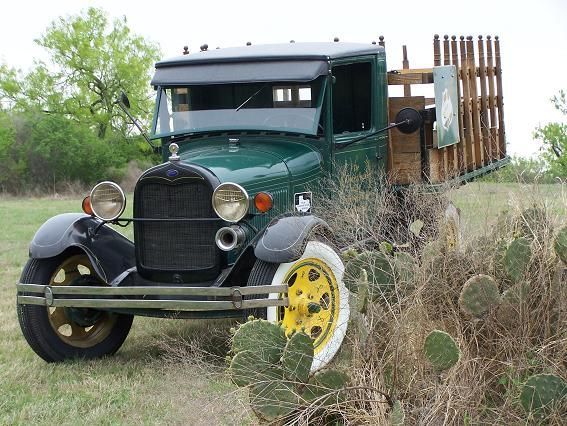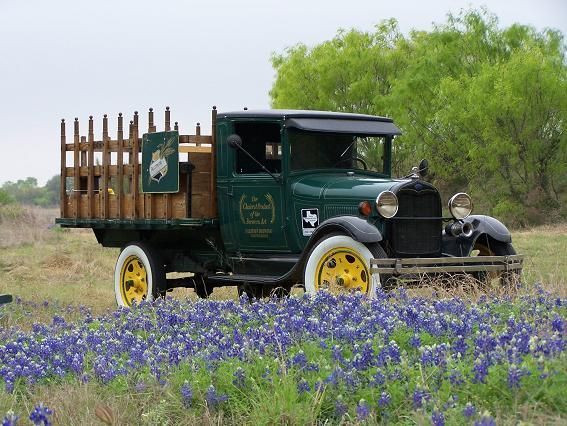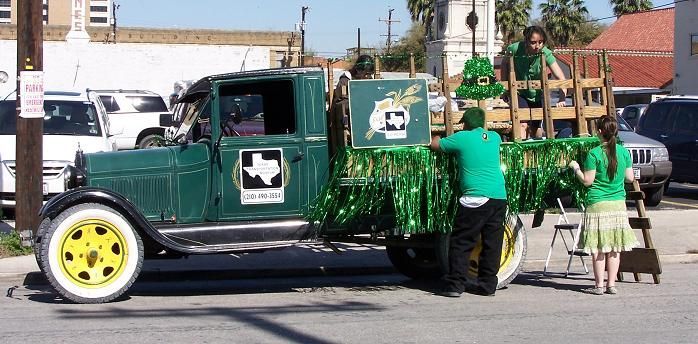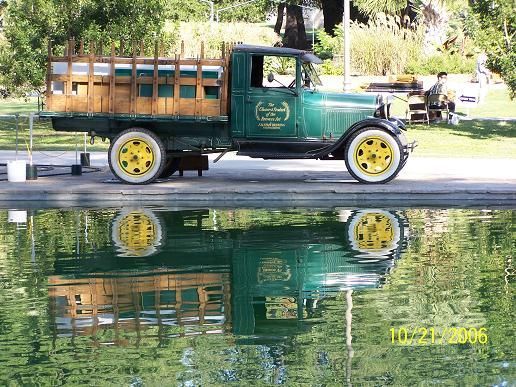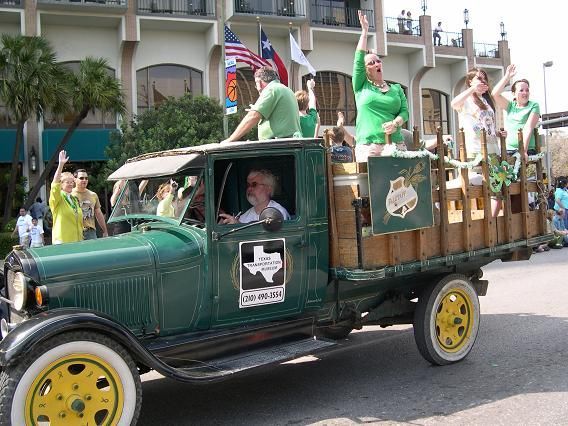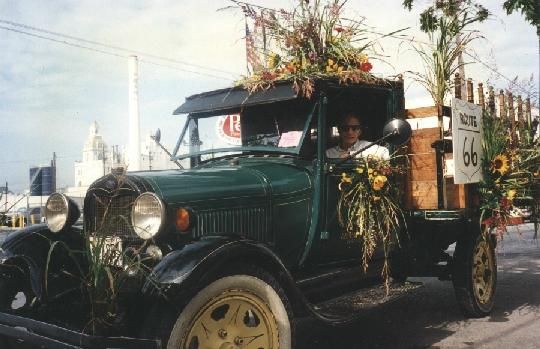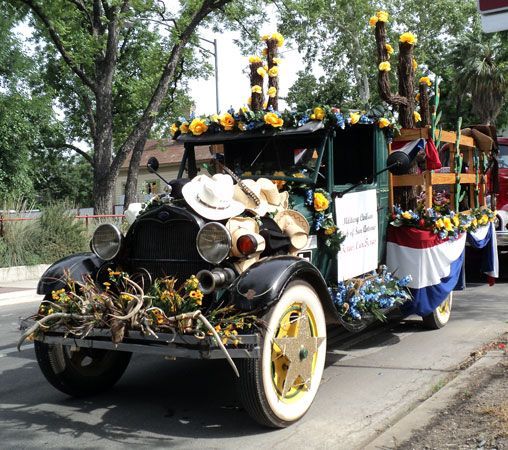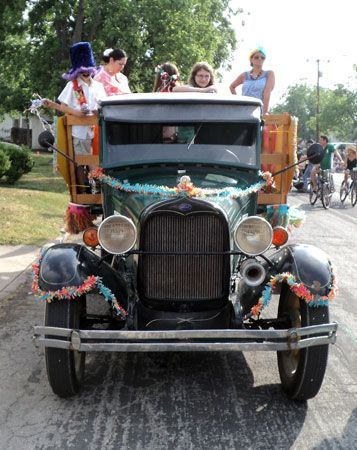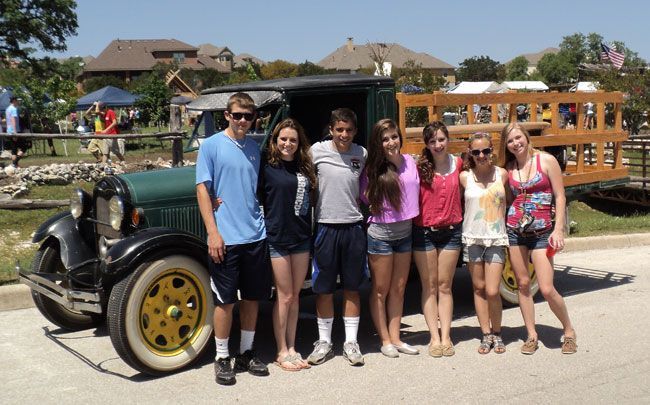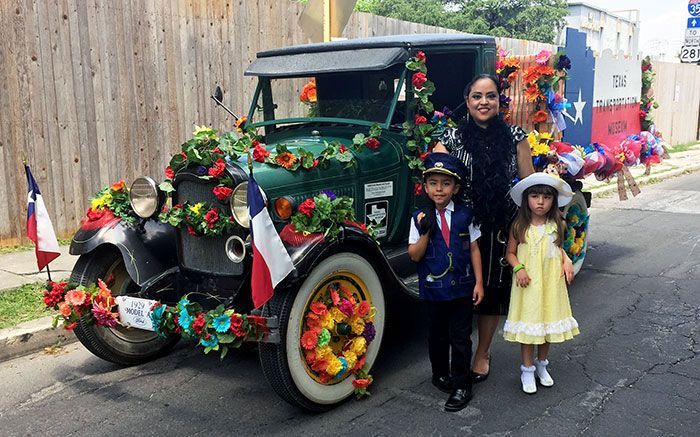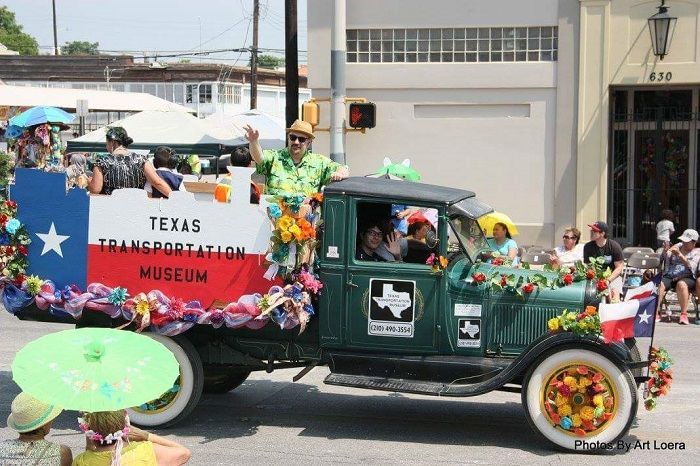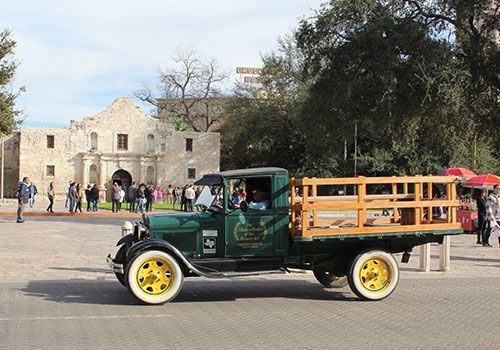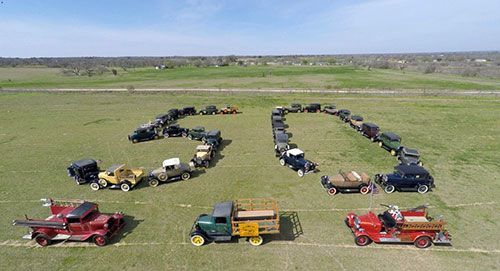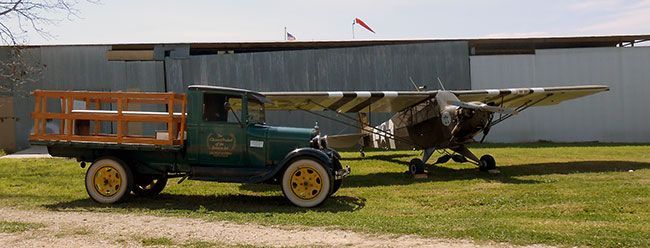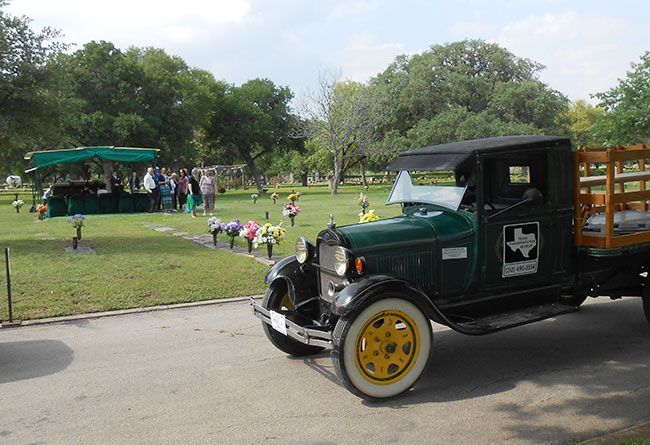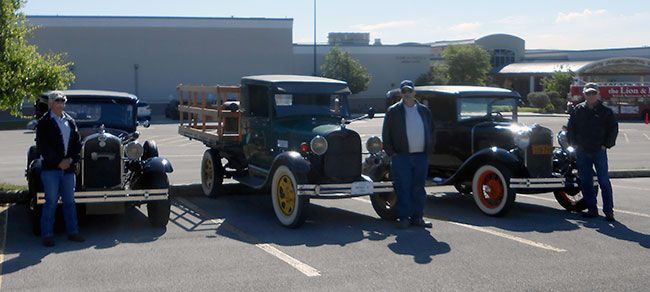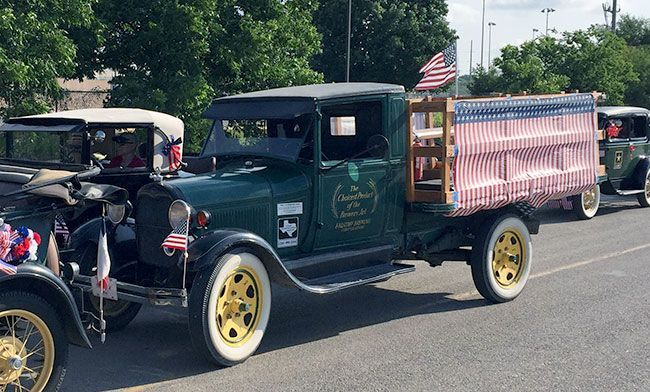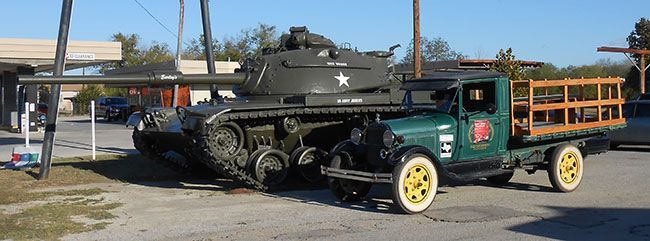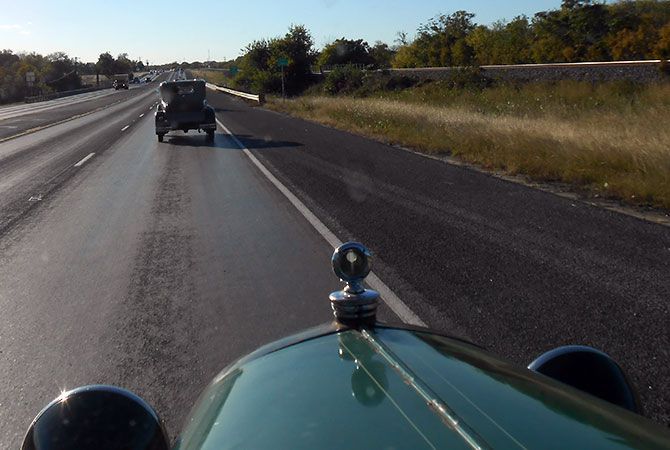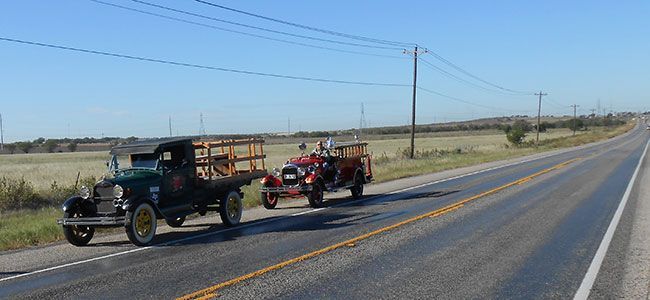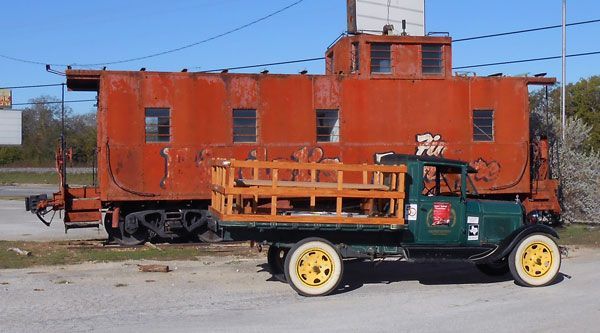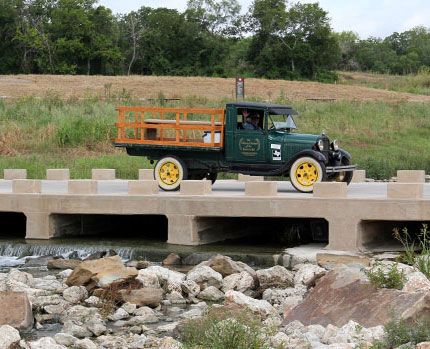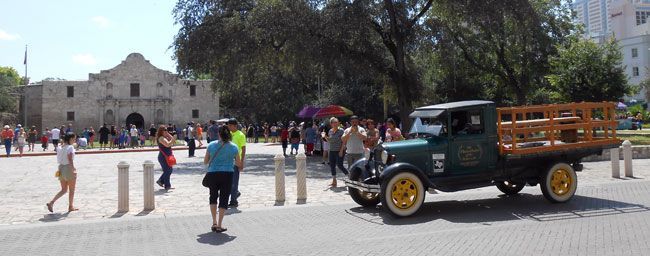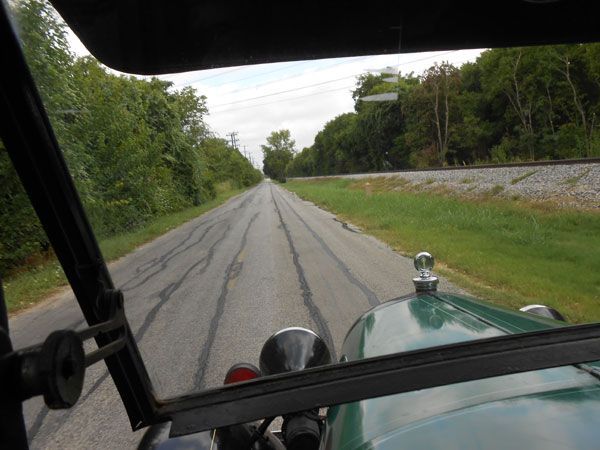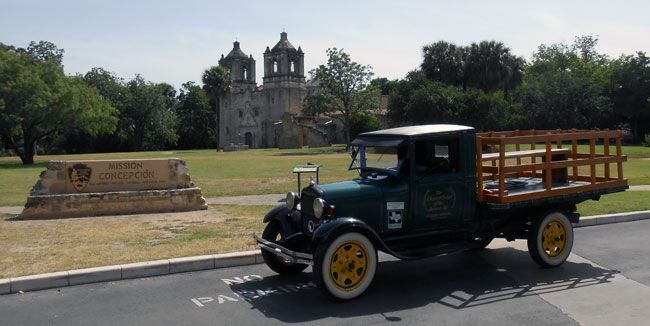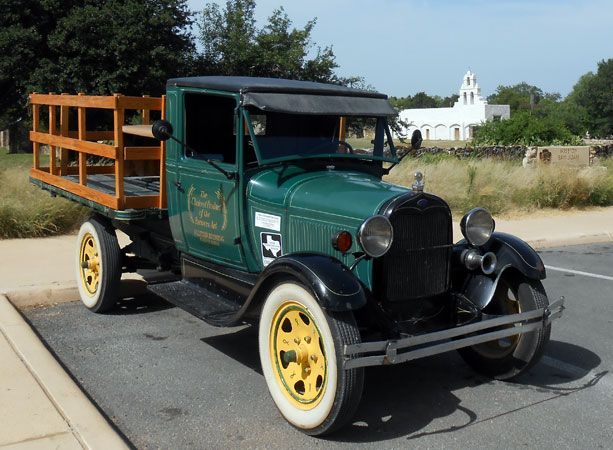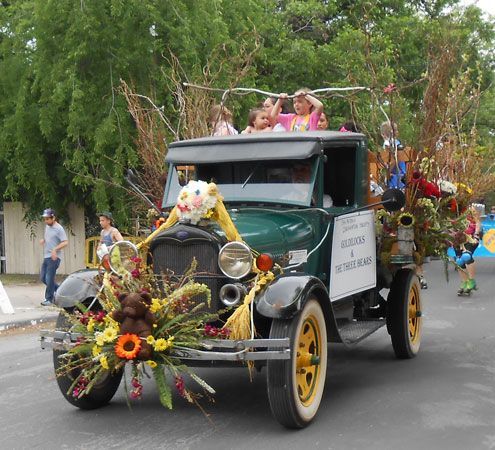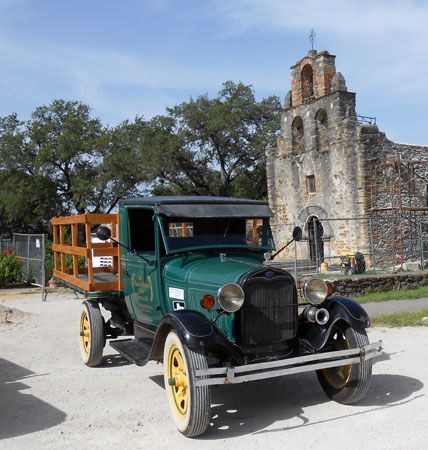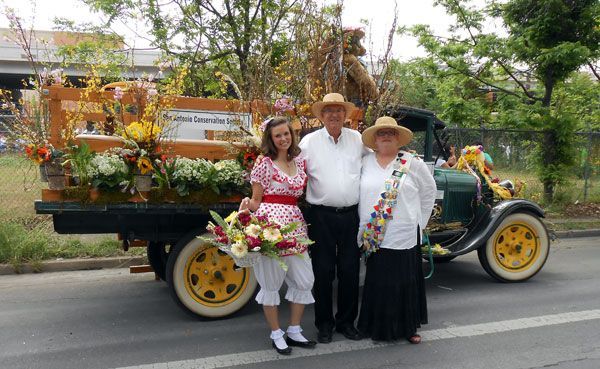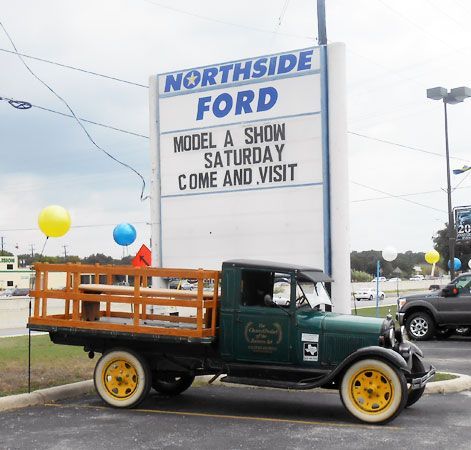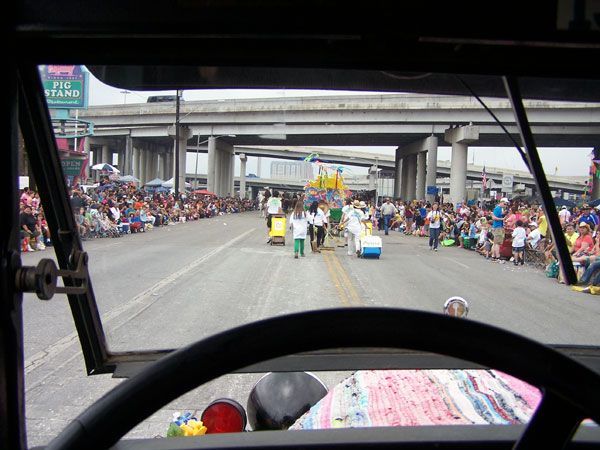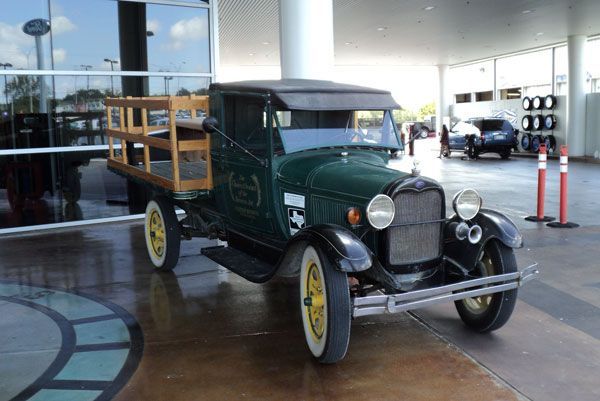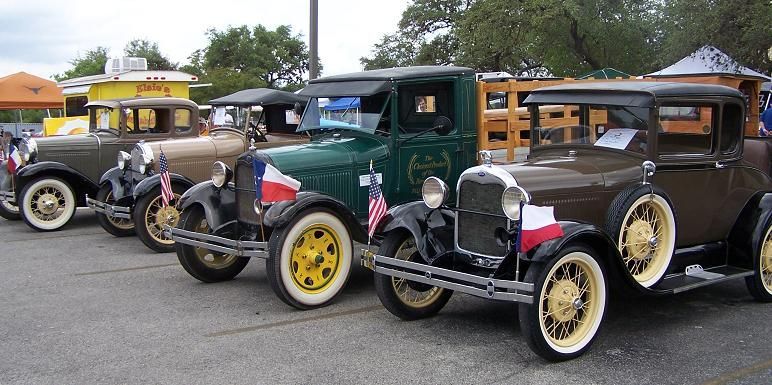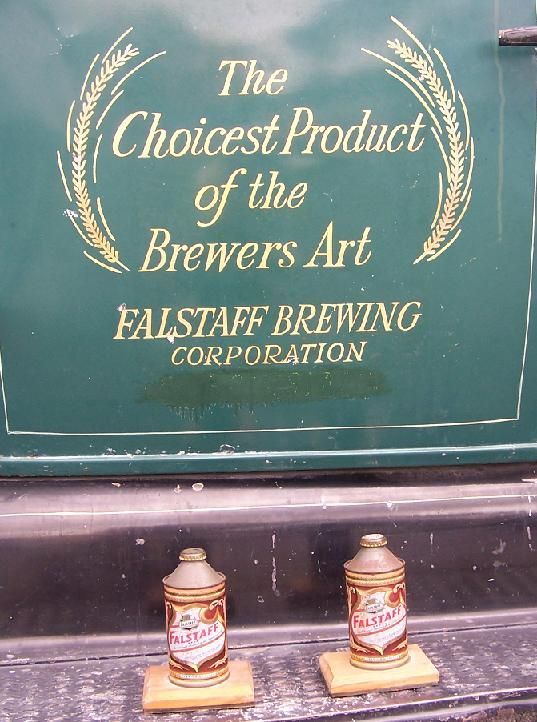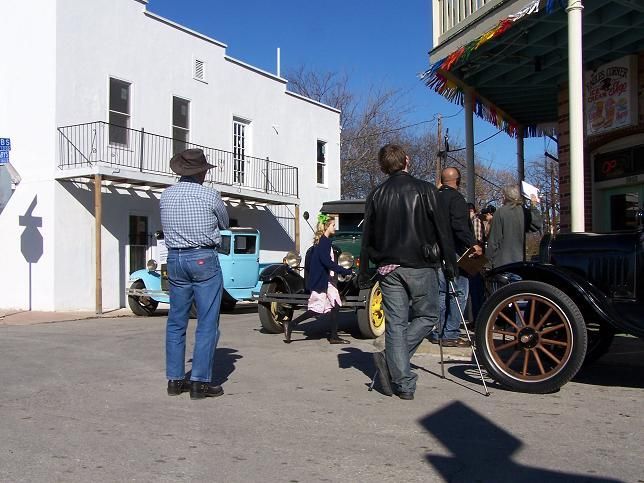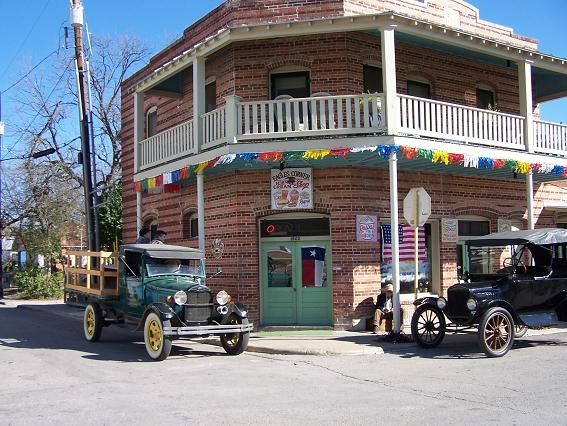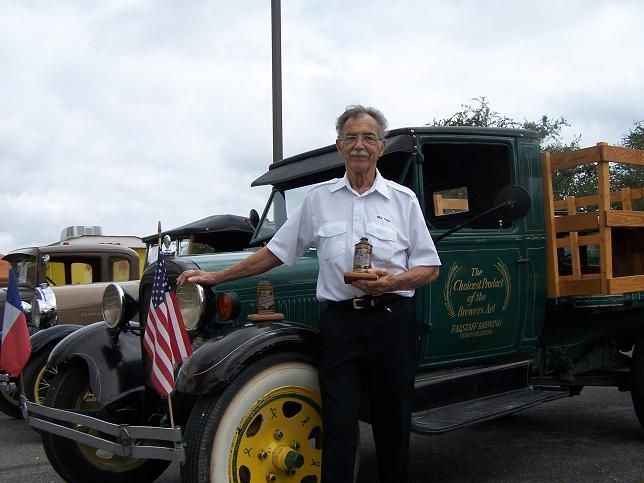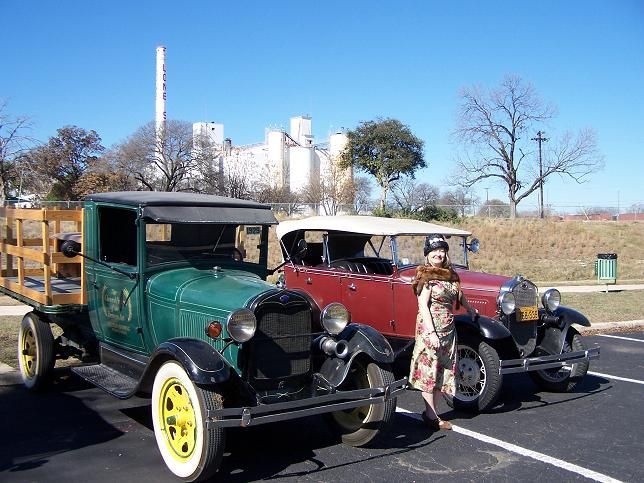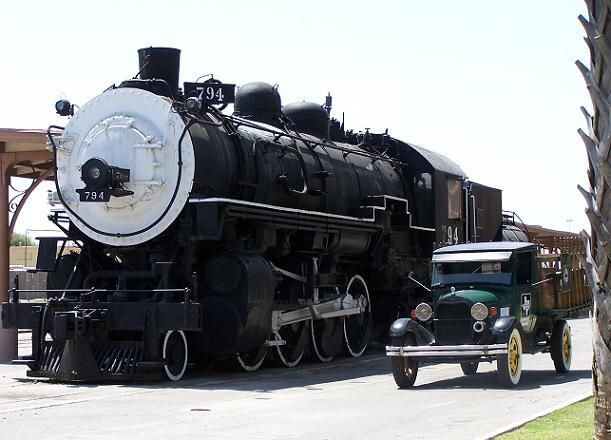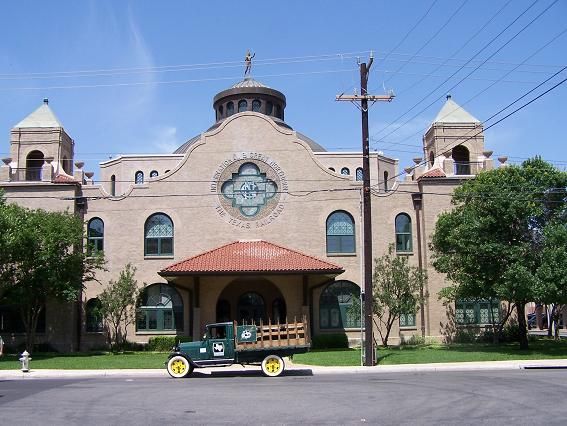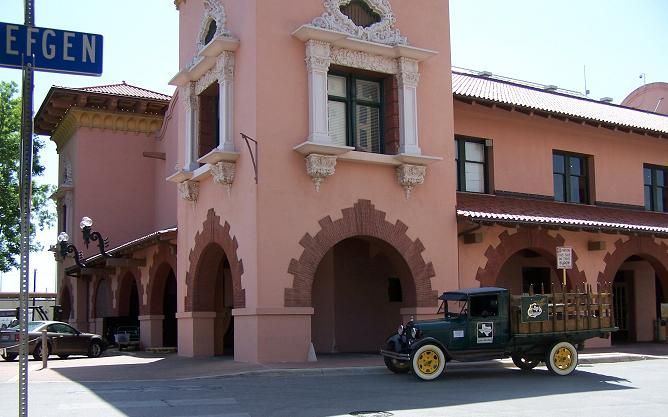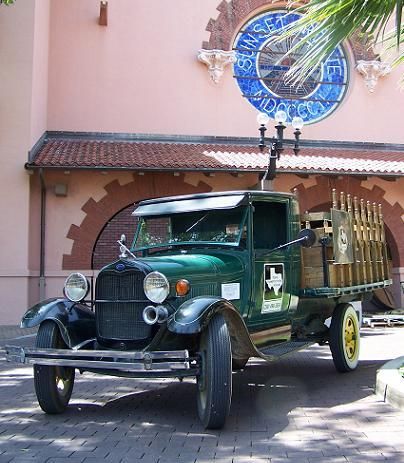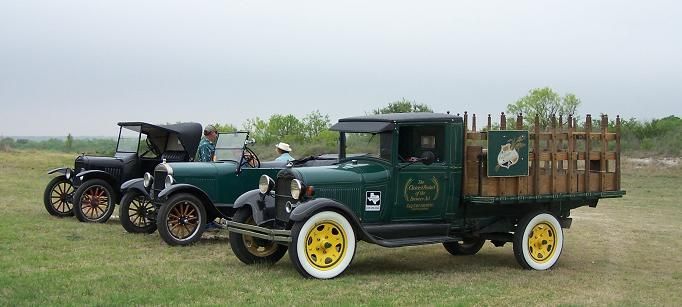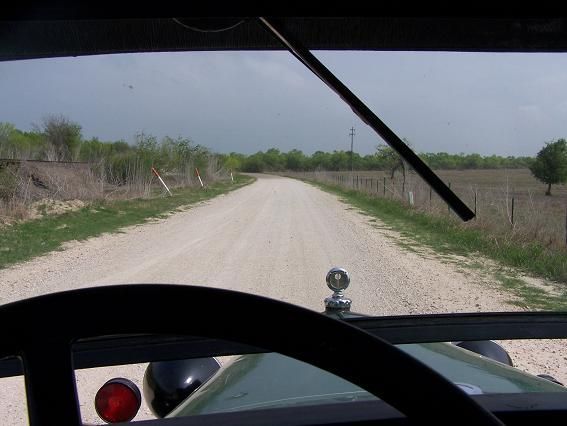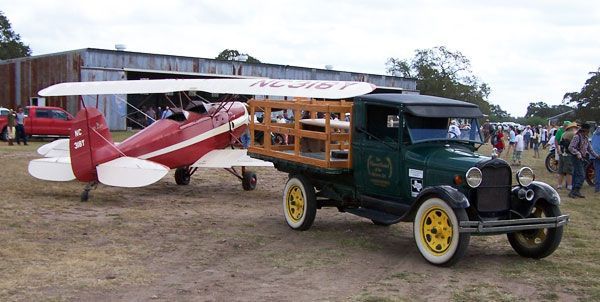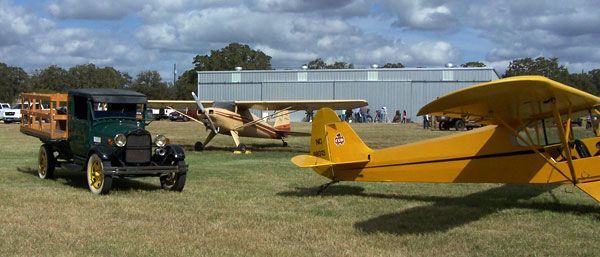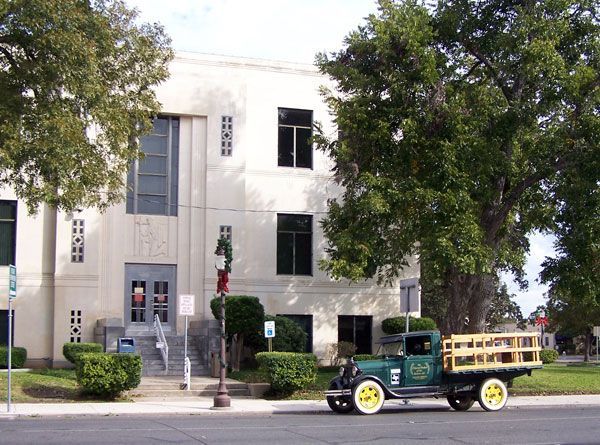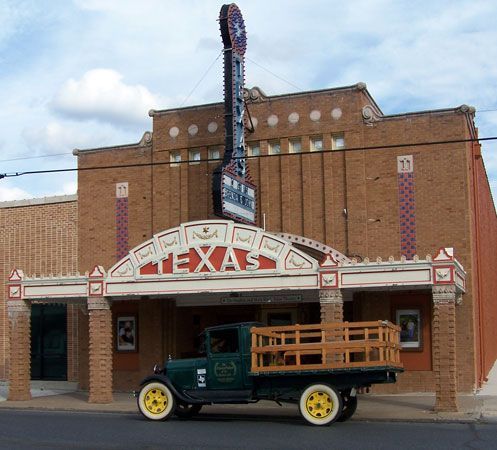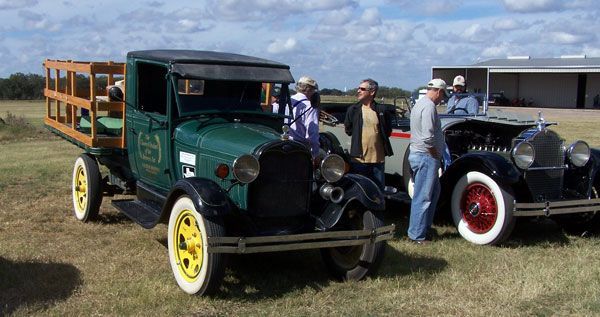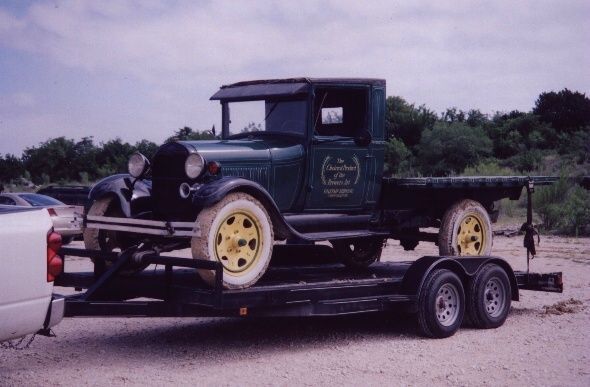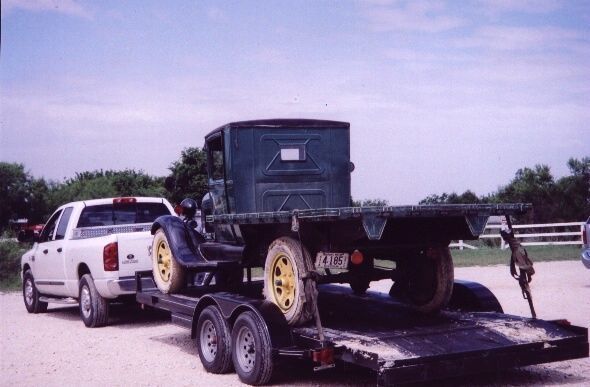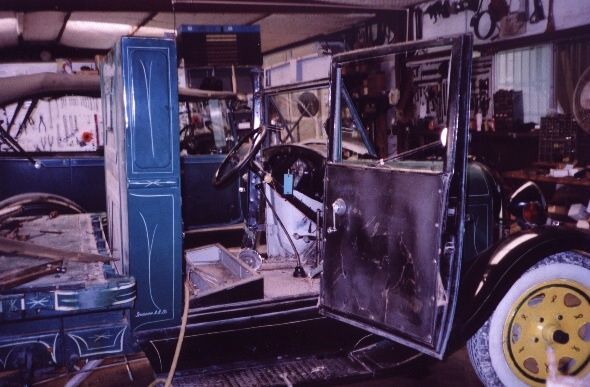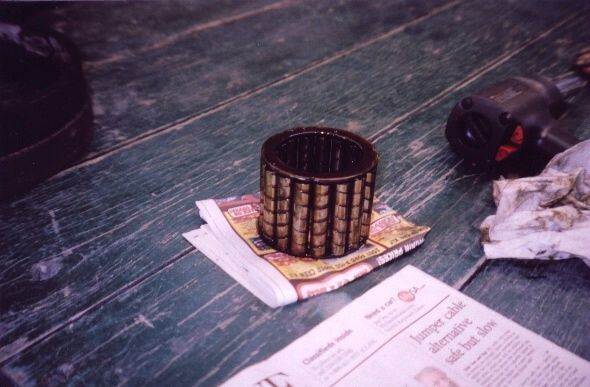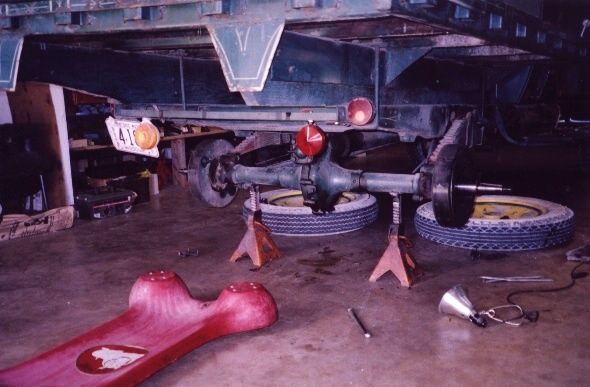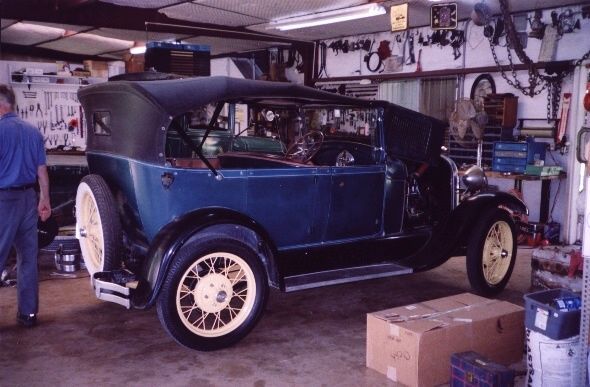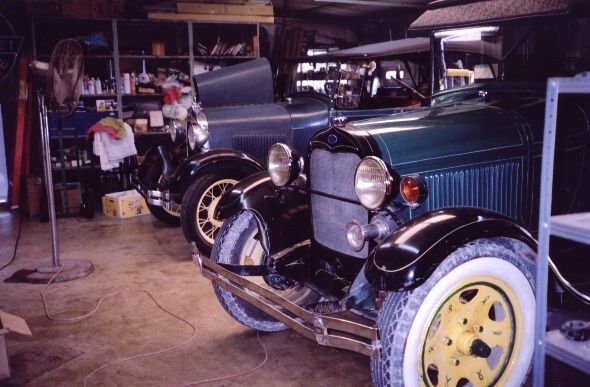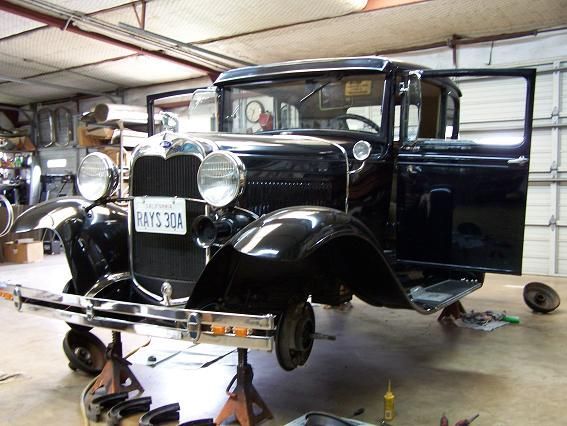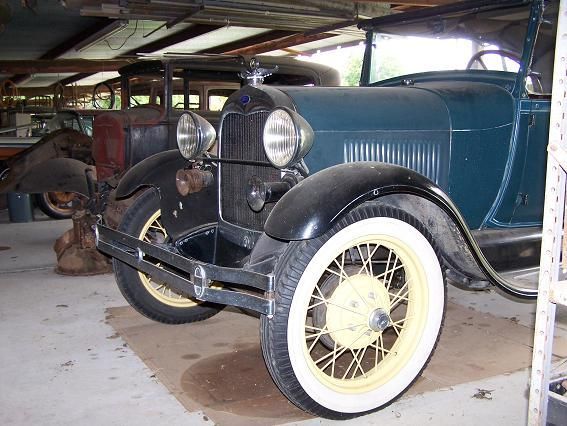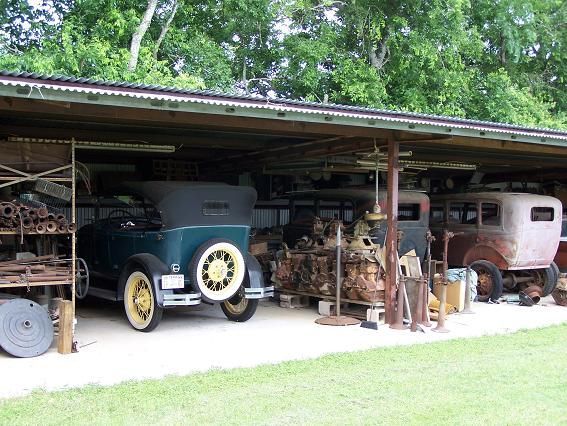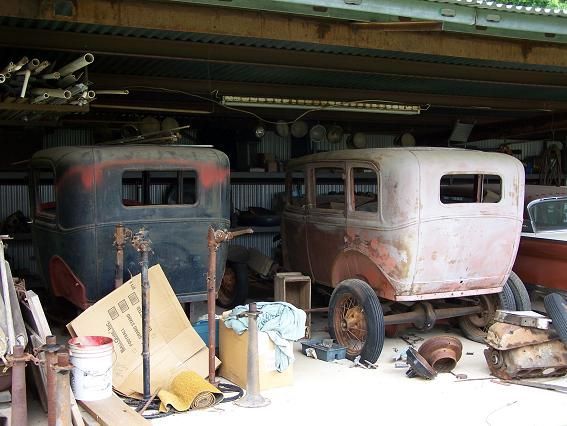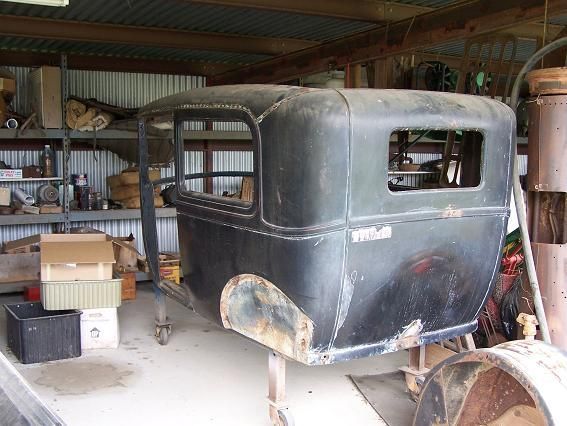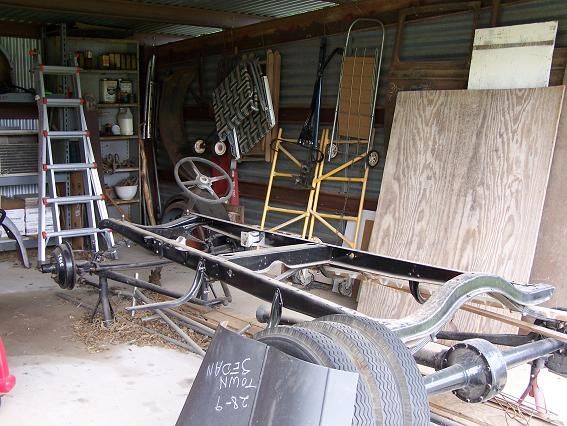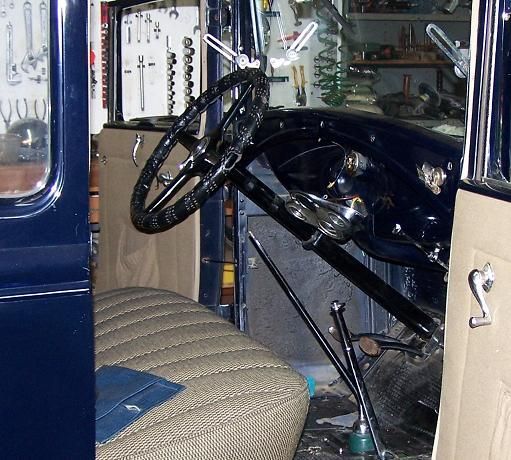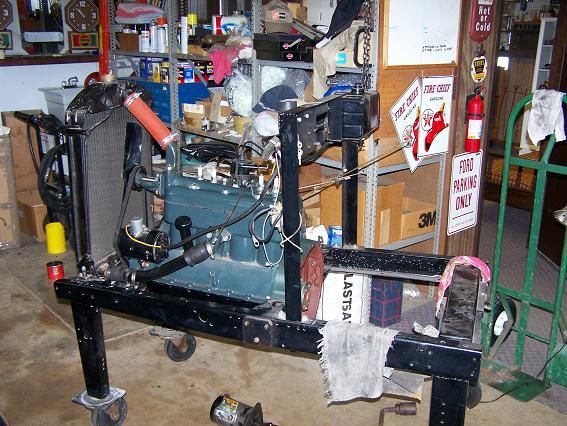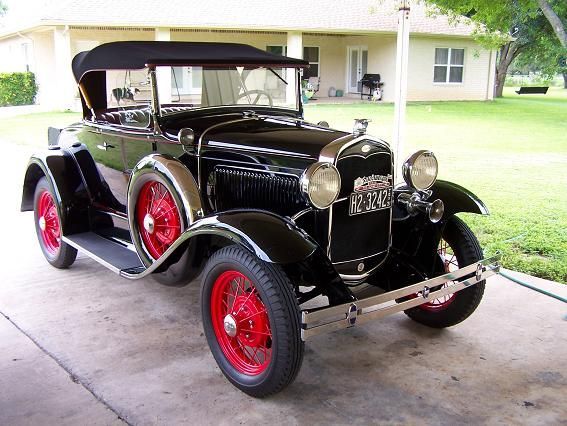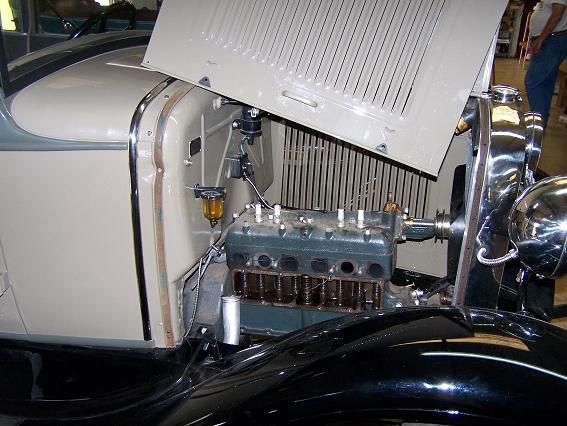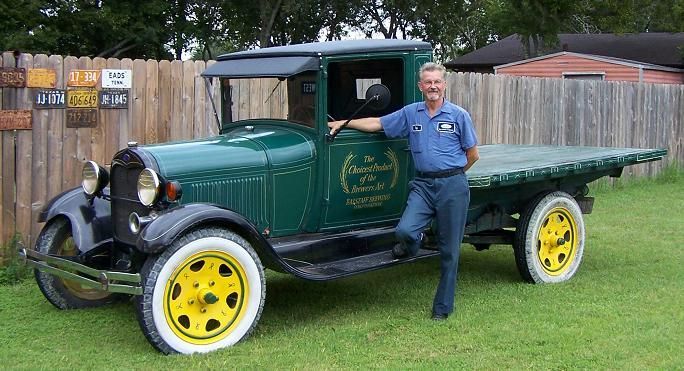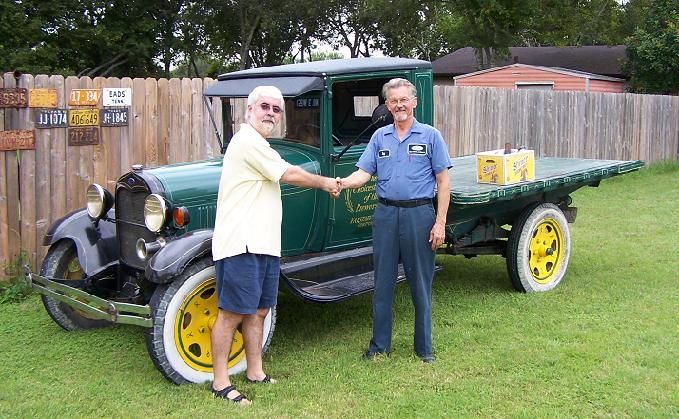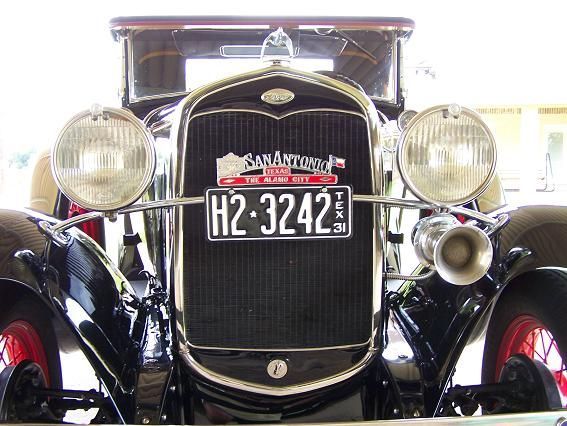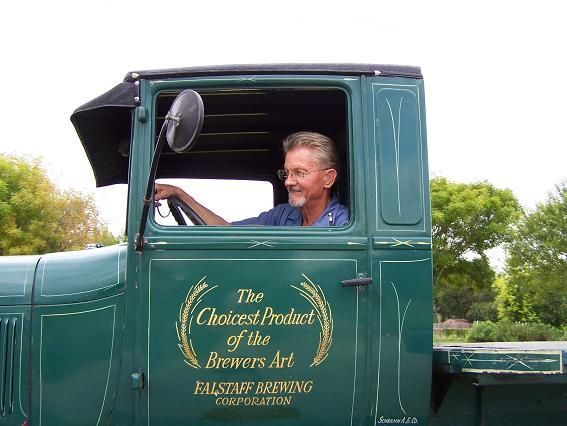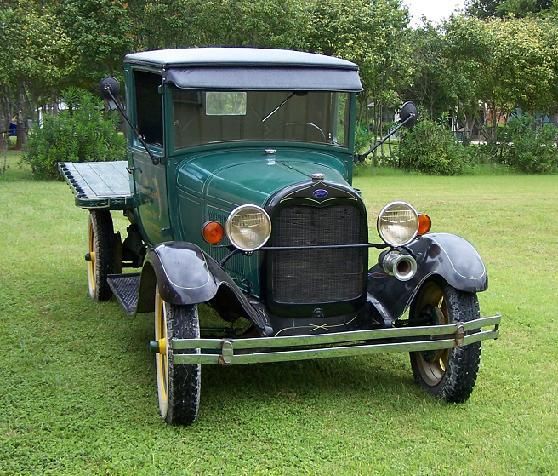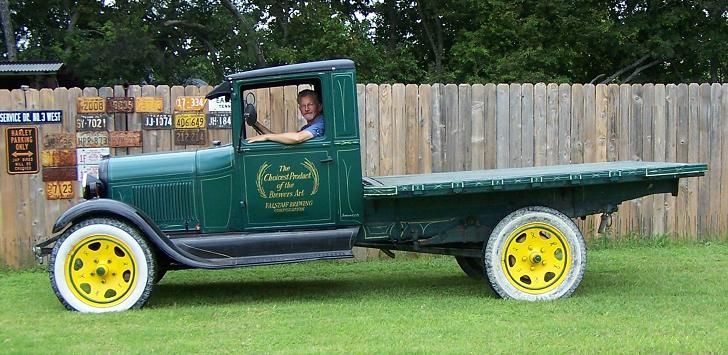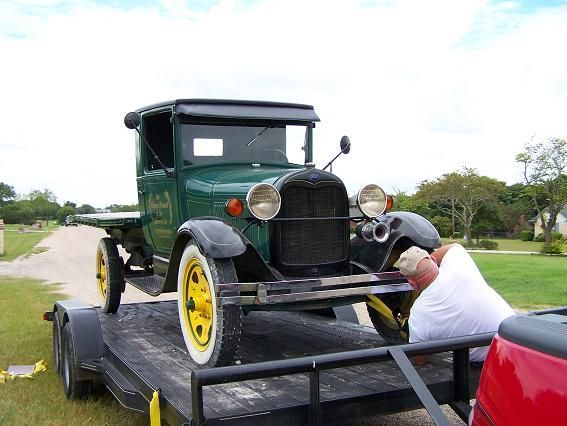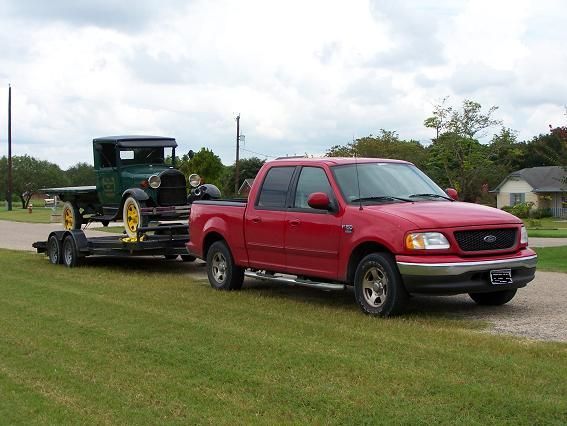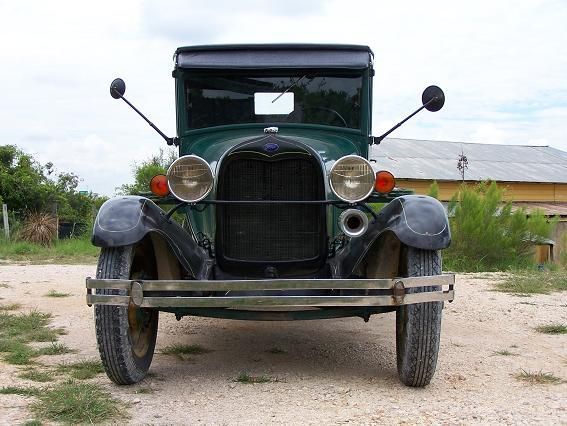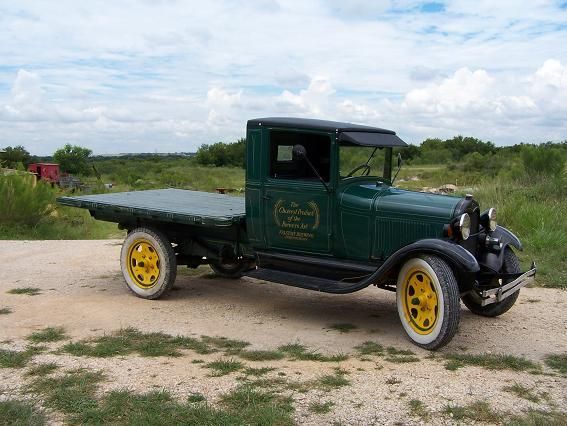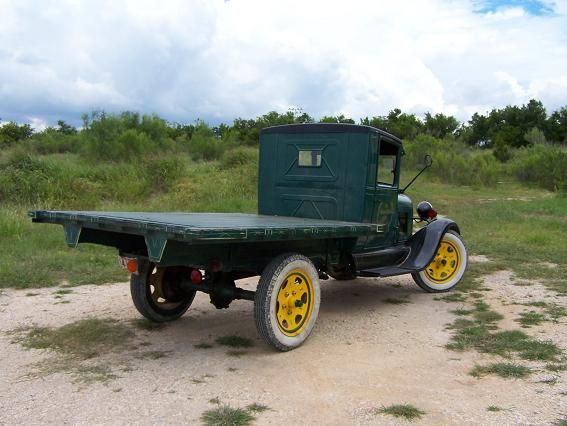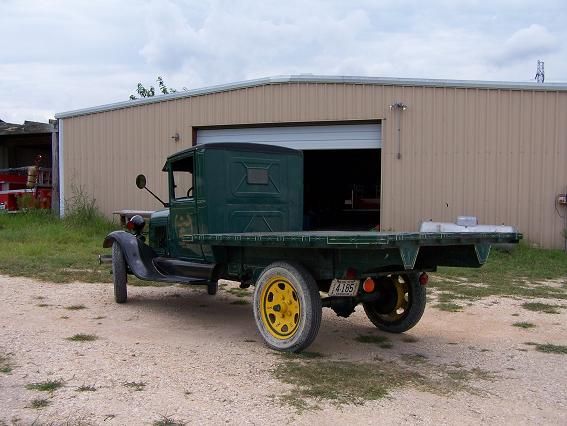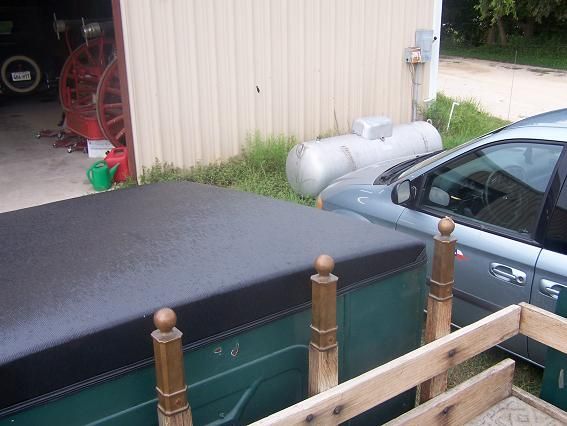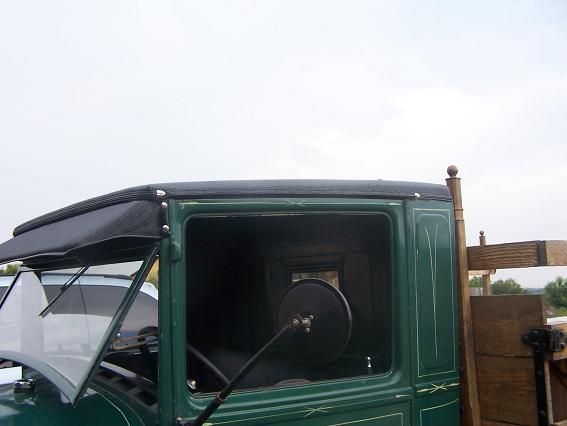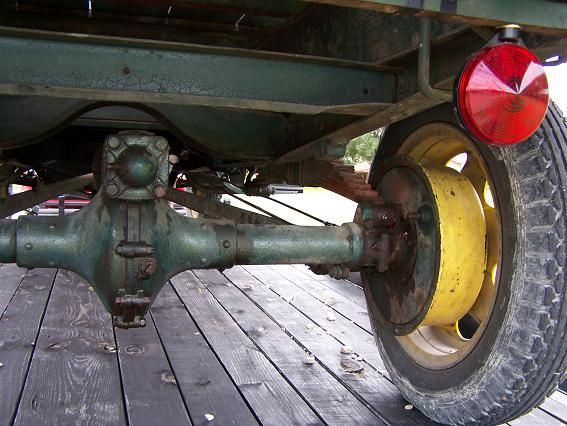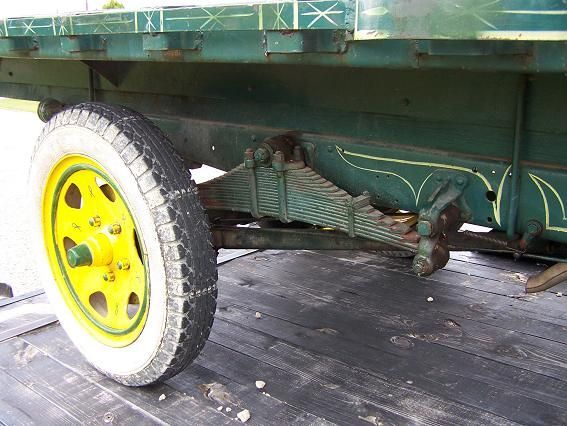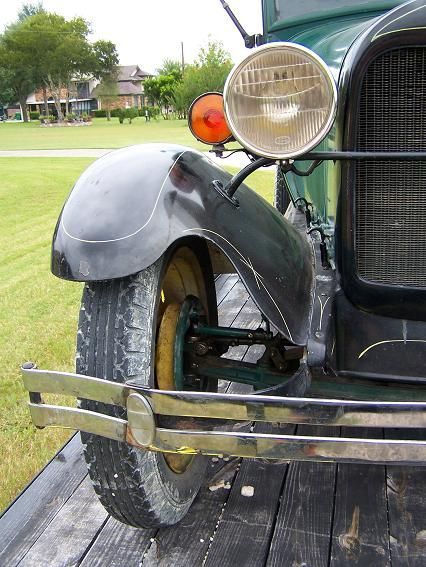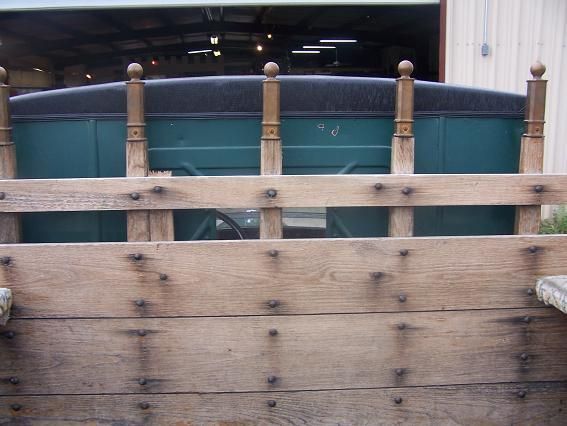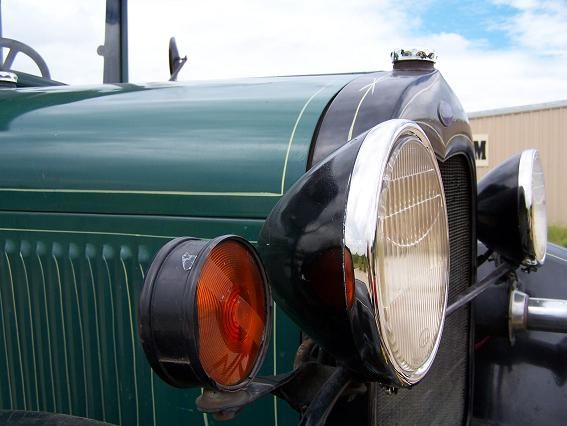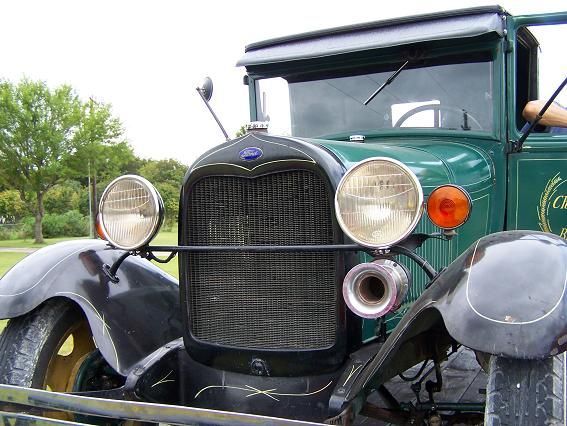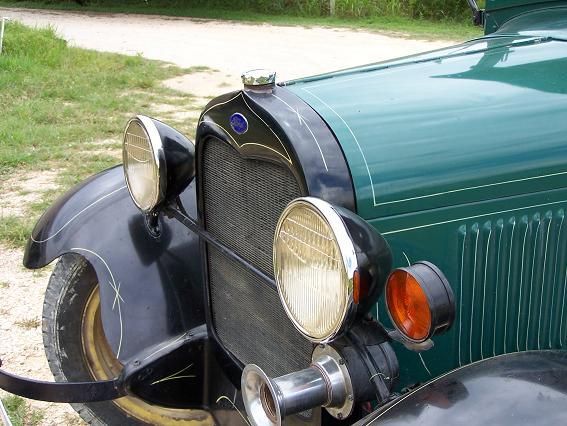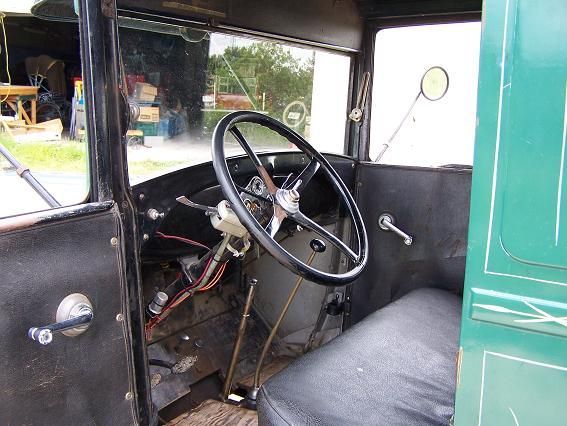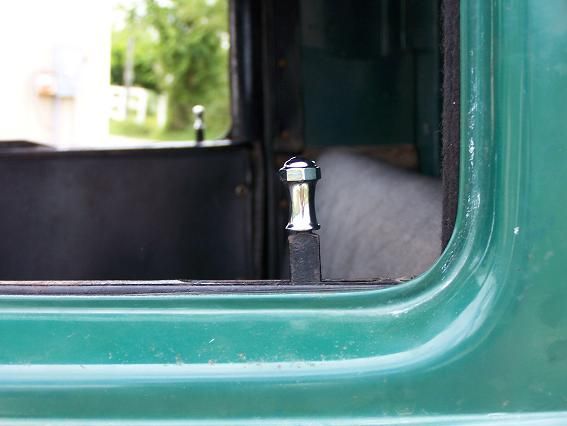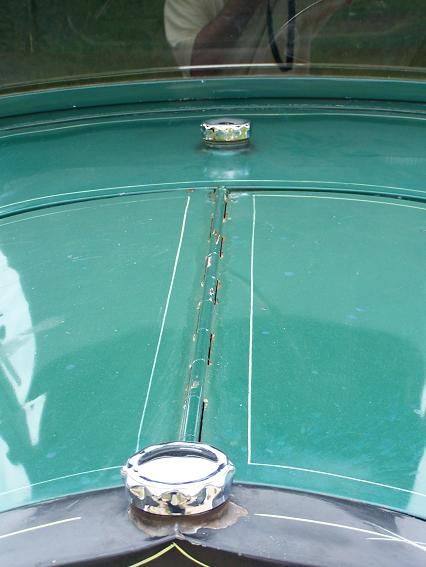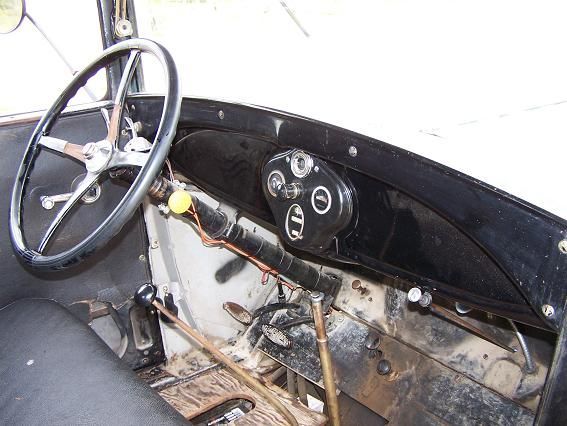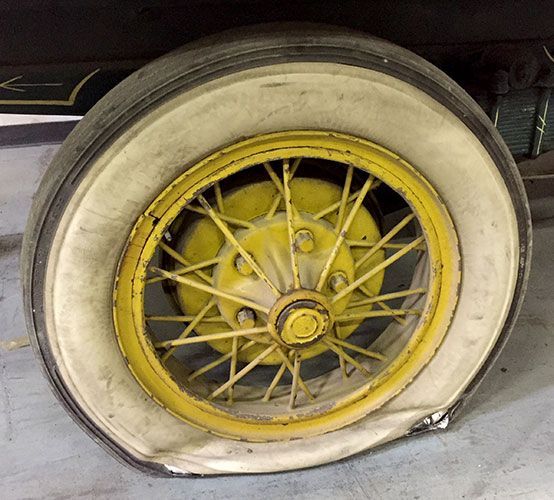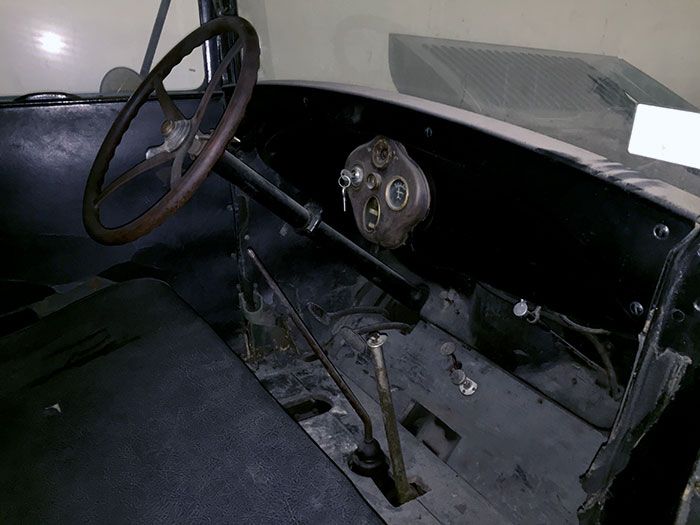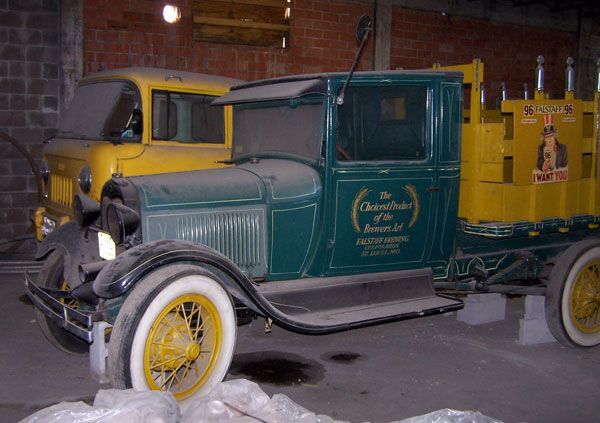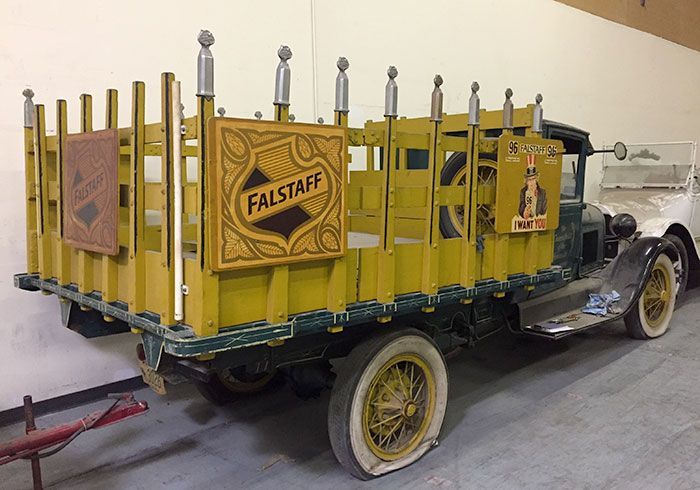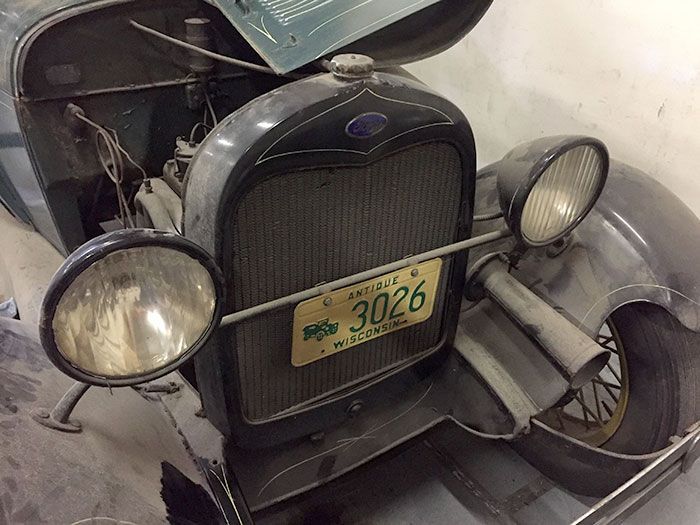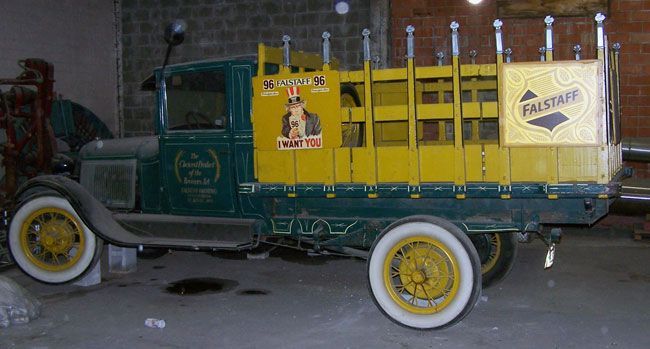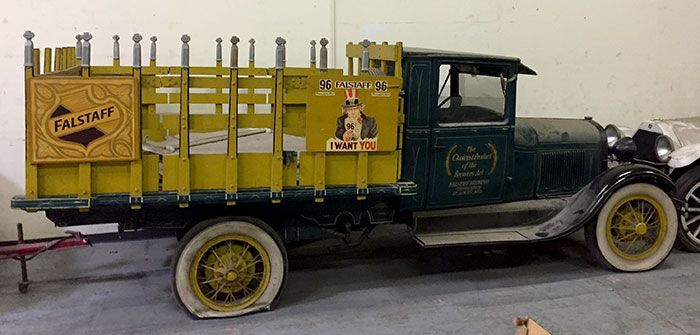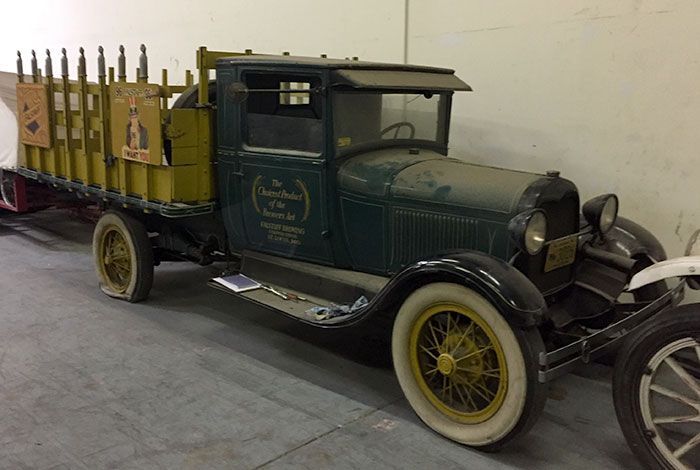1929 Ford Model A Truck
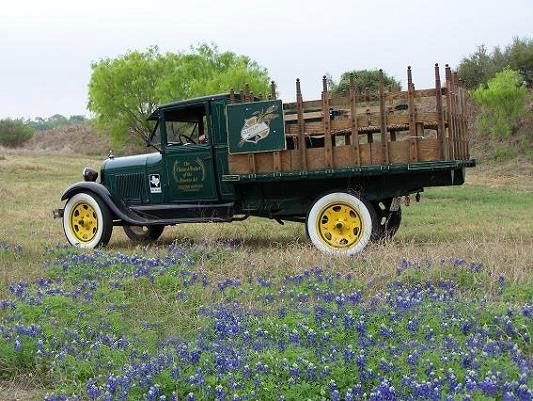
Technical Specifications
Year:
1929
Make:
Ford
Model:
Model AA
Body Style:
1 Ton Flatbed Truck with Metal Cab
Engine:
4 Cylinder, 200.5 cubic inch, 24 HP, 40 BHP
Transmission:
3-Speed manual with reverse, geared lower than regular Model As
Drive:
Rear wheels
Top Speed:
33 mph
Wheel Base:
131.5 inches
(Regular Model As have a 103 inch wheel base)
Length:
206 inches
Width:
79 inches
Height:
77 inches
Weight:
3,784 lbs
Wheels:
20 inch, heavy duty steel
Brakes:
4 wheel mechanical drums
Electrical System:
6-volt
Start System:
Electric starter motor
Features:
Speedometer, gas gauge and odometer. Instrument cluster light. Windshield hinged at top for ventilation. Bench seat. Heavy duty rear springs. Hand crank windows.
Additions:
Motometer (Radiator cap mounted temperature gauge)
Production:
130,608 Ford Model AAs (1,515,100 Model As of all kings were sold in 1929)
Original Price:
$475 ($6,000 in today's money)
Status:
Driven frequently on and off museum property
The AA version of the Model A has a longer and stronger wheelbase, and lower ratio gearing than regular Model A Fords to enable its 40 HP in-line 4 engine to move 3/4 ton of freight. This lower gearing keeps the vehicle's safe maximum speed to just over 30 MPH. It can go faster for a few moments but sustained high speed will damage the engine and transmission. It is one of our most popular and versatile vehicles. It can be used to provide rides to visitors at the museum and is also an excellent parade vehicle. It has been in the Battle of Flowers and the Fiesta Flambeau so many times it could probably make its own way along the route. It still has its original simple and reliable 40 BHP 4 cylinder engine with a three speed transmission, all around safety glass and four wheel mechanical brakes. This truck was designed for hard work.
First trip outside San Antonio under its own power in almost 30 years
In November 2012, the 1929 Ford Model AA truck was driven outside the city limits of San Antonio for the first time in at least 30 years to attend a vintage aircraft Fly-In at Kingsbury Aerodrome, just over 46 miles from the museum. A safe route, mainly along HWY 78 was used. The old truck ran perfectly, cruising along happily at almost 35 MPH. For grins a few snaps were taken in Seguin, to mark the occasion.
1929 Ford Model AA truck Under Repair, 2007
In 2007 a significant amount of work was done on this vehicle courtesy of it's donor, Mrs. Pat Monfrey. Here are a set of before and after pictures. In March 2008, new tires, flaps and inner tubes were fitted on the truck for over $1,100.00, thanks again to the generosity of Mrs. Monfrey. It is now ready to continue work for another 80 years.
The 1929 Ford Model AA truck's roof before and after replacement
The 1929 Ford Model AA truck located at Texas Transportation Museum was owned by Mrs. Pat Monfrey. It was purchased when she and John, her husband, owned the San Antonio Falstaff Beer distribution company. They bought the vehicle in the 1970s and had it painted as a Falstaff Beer delivery truck for promotional purposes. Pat kept the business going for a few years after John regrettably passed away before deciding to move into a different line of work. It was at this time, in the late 1980s that she gave the vehicle to TTM. It was not in good shape at that time. It had significant mechanical issues and also its roof and other woodwork was not in good shape..
How the truck looked before the work was done
Over the years the truck has been put to great use by the museum. Countless visitors have ridden on it around the museum's grounds. It has also been entered into any number of parades, including the Battle of Flowers, the Flambeau, the King William, Fourth of July, Christmas events. It was probably never more at home, as a green beer truck than in a recent St. Patrick's Day parade where, even in its rather poor condition, it still managed to win a prize!
How the truck looked before the work was done
By the early 1990s the truck was not being used much. In fact not many of the museum's vehicles were in running condition. The museum was coming out of a very low point in its history but fortunately a new wave of volunteers began to join, all keen to see the museum grow to its full potential. It was recognized that the 1929 Ford Model AA had attributes that would make it a fine working vehicle, both at the museum itself and in parades but there was a serious problem. It's seventy year old flywheel, which is engaged by the starter motor to get the engine going, was missing several vital teeth. If the engine stopped with the flywheel in a certain position, it was very difficult to start the engine. Fortunately, our good friends at SMT Truck Lines volunteered to help. They took the truck and set about looking for a flywheel for the antique vehicle. One was found in faraway China. It was ordered and delivered a month or so later. Once fitted, the truck started each time every time. SMT also did some other work, such as replace spark plugs, and other items. By the time it was returned to TTM, it was back in business.
How the truck looked before the work was done
By the end of the 1990s another serious problem emerged, one museum volunteers decided to tackle in house. The interior of the fuel tank had become badly corroded, which meant the fuel line was constantly becoming clogged with rust flakes. No shop would touch the vehicle so we set about removing the tank ourselves. (See picture on main automobile page on this site.) After we cleaned it out we used a commercially available cleaner and rust inhibitor. Reinstalling the tank, which is located between the cab and the engine, proved to be even more difficult than removing it but we got it done. We try to make sure the tank is kept full to help prevent more rust forming from condensation. We also installed a modern in-line fuel filter inside the cab, which does a better job than the original glass style one under the hood which relies on gravity alone. The new filter allows the driver to see what is wrong from within the cab and can be switched out in less than two minutes if necessary.
Repairs under way
Although we did our best to keep the vehicle in good condition, performing not only work needed to keep it running, like replacing batteries and spark plugs, we also tried to keep the vehicle looking its best by removing the classic instrument panel and fixing it up. We installed a fuel gauge which works with a thin metal rod and a cork which floats in the gasoline. If the tank is over full, gas actually sloshes to the gauge which is what took the paint off the front in the first place. We tried to get a cable to activate the speedometer and odometer, which we knew worked, but could not find one that fitted the AA truck, which needs a longer one than a regular Model A.
Ray's Model A Repairs, Restoration and Parts
Our major concern was the terrible condition of the roof. This is entirely supported by a wooden frame which had become rotten. It was around this time, early 2000, that we first heard about and met Ray, of Ray's Model A Repairs. Even he was reluctant to do the work at that time as a correct kit was not yet commercially available and the cost of hand making all the wooden pieces would have been astronomical. Fortunately a kit has subsequently come onto the market, as appreciation for the trucks as well as the coupes, sedans and convertibles has grown in the last few years, making the supply of parts for AA's a lot easier to find and less expensive.
Ray's Model A Repairs, Restoration and Parts
In all this time, the museum had not heard much from Mrs. Monfrey, who had moved to Houston. Current museum manager Hugh Hemphill, then museum board chairman, who had been involved in a good deal of the work to keep the truck in the best shape possible, was able to track her down and contact her. A series of pleasant communications followed about the truck. Pictures of it in parades and other events, like the Christmas Extravaganza at the museum, or at the San Antonio Founders Day event, held in San Pedro Park were sent to her on a regular basis. It was hard to hide the state of the roof and Mrs. Monfrey decided it would be in the best interests of the longevity of the vehicle if it was replaced and volunteered to do so in the Spring of 2007.
Ray's Model A Repairs, Restoration and Parts
Ray was contacted and pictures of the truck were sent to him. He decided he could do the work and tracked down the various kits that would be needed, as the parts for the roof and the visor are sold separately, and the vehicle would need both. Once these arrived, the old looking truck was loaded onto a trailer and pulled over to Ray's place. It is worth mentioning the truck would hardly get up to 30 MPH and even then it would be straining. As such, driving it to Ray's was not a feasible option. One long term volunteer mentioned it used to go 40 MPH quite easily, despite it's low ratio, heavy duty rear end and transmission, designed to haul heavy loads, not for speed.
Ray's Model A Repairs, Restoration and Parts
While the roof was the main focus of the exercise, Mrs. Monfrey agreed to a small amount of extra work. This included fixing the parking brake, getting the brake lights to work again, and replacing the headlight surrounds which has lost their old nickel plate "chrome" a long time ago. It should be mentioned right now that Ray is absolutely meticulous about his work, as befits a retired US Air Force jet engine master mechanic. If the work he performed on F4 Phantoms over Vietnam and Germany was not perfect, the planes just might fall out of the sky. Ray brings this same attention to detail and perfectionism to each and every Model A that comes into his shop and ours would be no different. Ray opened his shop in 1971 and has kept very busy without ever having to advertise his services. He relies on word of mouth and his reputation is extremely good. We were lucky he agreed to take on our truck. Soon enough he began to find more and more items he thought we should be aware of. Mrs. Monfrey, who cares a great deal about the truck, agreed to take care of just about everything Ray suggested. The vehicle just might never be so lucky to be in such good hands again.
Our 1929 Ford Model A Truck on its way home
The work to remove the roof was actually done at Ray's place by museum manager Hugh Hemphill. He also did a certain amount of transportation duties, taking parts to San Antonio Brake & Clutch downtown, to save Ray the effort. Ray did all the rest, which was a lot. The roof kit, fortunately made of wood, did not fit at all well, as it is a one size fits all for both the 27/28/29 types and the 30/31 which have significant differences, if you are talking about fitting a kit onto them. Ray had to painstakingly size all the parts, no men feat when you understand all the holes are pre-drilled, so changing anything could affect how other parts might align. The visor kit was easier but the original metal frame had surface rust all over it, so it had to be cleaned and re-painted. Then we started into the more difficult stuff!
Back at Texas Transportation Museum
When the truck first arrived at his place, Ray went through it, just to check it out. He soon began finding things that he thought really should be done. The webbing under the hood at the radiator and fire wall was completely worn away, making the truck much noisier than it needed to be as well as reducing the life expectancy of the engine covers. More importantly he noticed the original water pump belt pulley, which was constructed of two parts, had broken apart, causing unnecessary vibrations and potential damage to the motor. Replacing this would involve tipping the engine up, as the pulley sits in a special cutaway in the chassis. This also provided an opportunity to replace the motor mounts. Tipping the engine also meant removing the radiator completely. It was at this time he found that the bottom radiator pipe was found to be badly corroded and in imminent danger of failure.
Details of the new roof in our 1929 Ford Model A Truck
And so it went on. Taking the drums off to fix the parking brakes was a nightmare. These, like many items on the vehicles, may not have been removed since the vehicle was built in 1929. Ray rebuilt the carburetor and tuned the engine. He fixed the choke and fuel mixture control, which is on a long rod on the passenger side. He cleaned up the gear lever connections on the cab floor. He fixed the starter motor actuator rod, which had bad habit of coming off from all the vibrations as the vehicle was being driven. New radiator and gas caps were installed to compliment the spiffy new headlight surrounds. Ray noticed the doors were sagging badly. He re-hung them and then built up the striker plates which had become badly worn to ensure the doors stayed properly closed now they were back in the right place. New chrome pieces were fitted on the door opening rods.
Details of the new roof in our 1929 Ford Model A Truck
Altogether, with delays as esoteric parts were ordered or taken out for outside work, the truck was at Ray's place for almost six weeks. So many small, seemingly insignificant details were attended to, it's hard to list them all. When he had the front window removed, he replaced the weather stripping around it. He cleaned up the brass rods that keep it open for ventilation. he installed correct side window guides as the old ones were completely gone on one side and barely hanging on on the other. He removed a generic starter switch which placed live electrical wires dangerously close to the fuel tank. He installed a correct cable from the transmission to the odometer and speedometer, bringing them back into service. In all of this he was consistently polite and positive. It would pain him to see something incorrect that he could fix. We were indeed lucky to obtain his services.
Details of the new roof in our 1929 Ford Model A Truck
The museum also does not underestimate Mrs. Monfrey's generosity. We are so lucky to have the truck in the first place, but to have Pat come forward to provide the financial support to return it to excellent running condition and to improve its appearance is quite extraordinary. TTM is far from being a wealthy museum. We have seen our financial situation stabilize and improve significantly over the last few years but, even so, it would have been some time before we would have been in a position to allocate so large a chunk of our all too stretched resources to any vehicle, even one we appreciate and use as much as we do this one. In doing so, we hope we are honoring the memory of John Monfrey, whose idea it was to acquire the vehicle in the 1970s. We run it in the same parades and events that he did. In the course of any given year it is seen by thousands of people. A good number even get to ride on it, experiencing an older form of transportation in a very real way that is impossible to duplicate.
Details of the new roof in our 1929 Ford Model A Truck
If we had known how well the truck would drive after ray had finished with it we would probably have simply driven it back to the museum. It drives so much more smoothly and quietly. It also cruises quite happily at 35 MPH. It can go faster, to around 45 MPH, but you definitely get the impression that you are pushing it. That additional power is for hauling heavy loads, not driving fast. The future of the truck is now looking as good as its wonderful new roof. As the vehicle spends most of its time indoors, we hope it will be a long, long time before anyone has to think about replacing it, maybe another eighty years. When that happens, we hope the truck is still at TTM, delighting visitors and parade goers. We also hope those folks in the future are lucky to find someone as skilled as Ray to do the work and as generous as Mrs. Monfrey to help pay for the considerable cost involved.
Another Falstaff Beer Ford Model A truck in San Antonio
Amazingly enough, there is a second Ford Model AA truck painted in Falstaff Beer livery in San Antonio. It has been hidden away within a deep recess of the old Pearl Brewery complex near down town. The first two snaps were taken in April 2013, the remainder in May 2017. The vehicle, though deep in dust, seems complete. The biggest difference between this and TTM's vehicle are the wheels. This one has wire spokes while TTM's has solid steel wheels.
